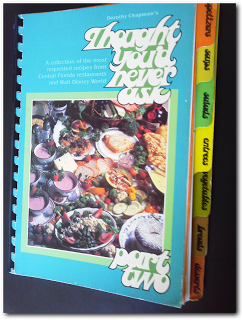I have been asked why I spend so much time doing research when that work is not considered research by my university. My answer is that I believe in public history. I have written before about
having to twice as hard to get tenure because I study regional rather than national figures in journalism history. While it does not feel fair, the women I write about were rarely treated fairly and faced much bigger hurdles than my own.
I have the usual peer-review history journal articles that I publicize through social media, especially Academia.edu and Linkedin.
My article about food editor Jeanne Voltz has more than 560 page views on Academia and my
co-authored article (with Lance Speere) in Gastronomica about ethics and food journalism earned 100 page views in a 24-hour period after first posted. You can find most of my academic papers here. (Academia.edu is free but you have to register.)
Public history means getting stories out to the masses – much like journalism, which is why I enjoy it. I recently reviewed Eileen M. Wirth's book From
Society Page to Front Page: Nebraska Women in Journalism for an Iowa history journal. It is an important book and I enjoyed her closing messages: “I had no idea how many women of achievement in journalism and other fields have been overlooked even in state and regional histories where they might be expected to appear.” (p 163) Further, she wrote “We cannot understand the history of women in the United States unless we consider local and regional dimensions because family obligations have limited the geographic and career mobility of the vast majority of American women.” (pg 164) This what public historians do very well.
While not considered peer reviewed, my articles in regional history magazines have meant a wider audience than a journal article and usually an opportunity to use rich visual images. Consider these examples:
Roberta Applegate in Michigan History Magazine,
Bobbi McCallum in Columbia Magazine and
Colleen “Koky” Dishon in Timeline. I also made sure that Reno journalism Flo Burge was included in an online project for
Nevada Women’s History and that Fort Lauderdale journalist Edee Greene was included in an online project documenting Central Florida Radio History.
During the past year, I have had the opportunity to share the stories of Florida women’s page editors (a favorite topic) at talks at Urban Rethink in Orlando and for a meeting of the Daytona Beach Junior League. Next Spring, I will speak about Florida’s women’s page journalism during Women’s History Month at the Orange County History Center. Later, I will speak about
Chicago Tribune food editor Ruth Ellen Church at a meeting of the Culinary Historians of Chicago.
Probably my favorite public history project was getting the previously mentioned Roberta Applegate inducted into the
Michigan Journalism Hall of Fame. Roberta was long dead when I came across her work. To get the information needed for the lengthy induction consideration, I had to travel to two archives in different states. The first attempt I made was tabled and I was crushed. The following year, I was successful – Roberta would become a member of the Hall which included her father, a journalism history professor. Lance & I flew to Detroit. I got to speak about Roberta (featured above) and her elderly brother accepted on her behalf. This recognition guarantees that her name remains a part of journalism history for future generations.
And, of course, there is this blog which has highlighted women’s page journalists over the last five years and led to more than 115,000 page views. My blog as a public history project was highlighted in
this Columbia Journalism Review story last year. My favorite blog projects included the 30 women I posted about each day of
Women’s History Month, the
Seven Objects that represented the women’s pages and the
month of top newspaper food editors.
I work on public history projects because the women I study were so important to their individual communities, even if they were not national figures. Without public history and/or regional history, these women's stories would likely remain untold.















